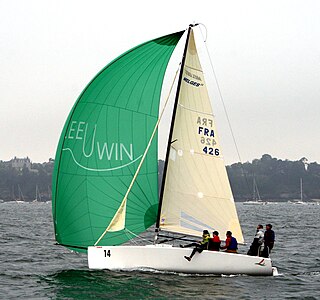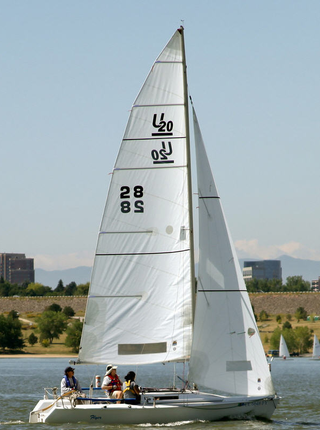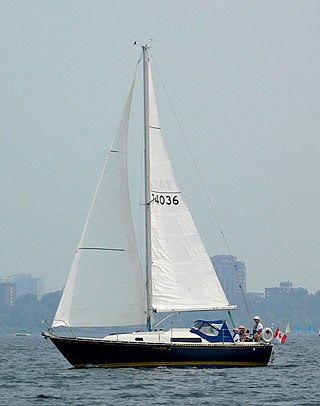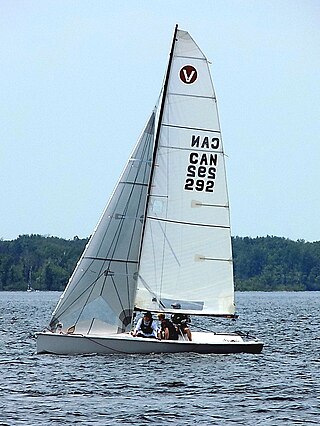
The Melges 24 is an American trailerable sailboat that was designed by Reichel/Pugh as a one-design racer and first built in 1993.
The Melges 17 is an American scow-hulled sailing dinghy that was designed by Reichel/Pugh as a one-design racer and first built in 2005.

The Melges 32 is an American sailboat that was designed by Reichel/Pugh as a one-design racer and first built in 2004.
The Melges 20, originally called the Audi Melges 20, is an American trailerable sailboat that was designed by Reichel/Pugh as a one-design racer and first built in 2007.

The Swan 45 is a Finnish sailboat that was designed by Germán Frers as a one design racer-cruiser and first built in 2001.

The Ultimate 20 is an American trailerable sailboat that was designed by Jim Antrim and Jeff Canepa as a one design racer and first built in 1994.

The Swan 48 Frers, also called the Swan 48-2 and the Swan 48-2 Frers, is a Finnish sailboat that was designed by Germán Frers as a blue water cruiser-racer and first built in 1995.
The ClubSwan 50 is a Finnish sailboat that was designed by Juan Kouyoumdjian as a one design and International Rating Certificate racer-cruiser, first built in 2015. The interior was designed by Michele Bönan.
The Swan 115 is a Finnish superyacht sailboat that was designed by Germán Frers as a racer-cruiser and first built in 2015. The design was built in both fixed keel and lifting keel versions as well as with two deck configurations, flush deck ("FD") and raised salon ("S").

The C&C 30 is a series of Canadian and American sailboats, that was first built in 1973.

The Kirby 25 is a Canadian trailerable sailboat, that was designed by Bruce Kirby as a racer and first built in 1978. The design is out of production.

The Viper 640 is an American trailerable sailboat, that was designed by Brian Bennett for racing and first built in 1996.

The Beneteau Figaro 2 or Beneteau Figaro II, officially designated as the Figaro Beneteau II, is a French sailboat that was designed by Marc Lombard as a one design, single-handed, off-shore racer for the Solitaire du Figaro race and first built in 2003. The boat and the race are named for the race's sponsor, the French newspaper Le Figaro.

The Beneteau Figaro 3, officially called the Figaro Beneteau 3, is a French hydrofoil-equipped sailboat that was designed by Van Peteghem/Lauriot-Prevost as a one design racer specifically for the Solitaire du Figaro race and first built in 2018. The boat and the race are named for the race's sponsor, the French newspaper Le Figaro.
The Cape 31 is a South African planing sailboat that was designed by Mark Mills as an one design racer and first built in 2017.
The Schock 40 is an American sailboat that was designed by DynaYacht as a racer and first built in 2000.
The Melges 30 is an American sailboat that was designed by Reichel/Pugh as a racer and first built in 1996.
The Flying Tiger 7.5 is a Chinese trailerable sailboat that was designed by American naval architect Robert Perry as a one design racer. It was first built in 2009.

The Sun Fast 3200 is a French sailboat that was designed by Daniel Andrieu as a racer-cruiser and first built in 2008. The nomenclature indicates a waterline length of 32.00 ft (9.75 m).
The ClubSwan 125 is a Finnish planing supermaxi sailboat that was designed by Juan Kouyoumdjian as an International Rating Certificate racer and first built in 2021. The interior was designed by Adriana Monk.










